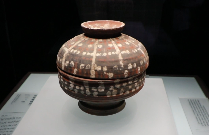Matouqin music

The matouqin, or horse-head fiddle, is a Mongolian instrument. It is called the horse-head fiddle because the top of the pole is carved into the shape of a horse head.
Year: 2006
Sort: Folk Music
Area:Inner Mongolia
Serial No.: Ⅱ-35
Declarer: Inner Mongolia Autonomous Region
The matouqin, or horse-head fiddle, is a Mongolian instrument. It is called the horse-head fiddle because the top of the pole is carved into the shape of a horse head. The instrument has a long history, and it was quite popular with the Mongolian people during the early period of the 13th century. The names, structures, tones and performance styles vary from place to place.
According to legend, a lord killed a white horse with and arrow. The horse's owner, Suhe, was filled with sorrow and missed his pet day and night. One night the dead horse came to him in a dream, and said, "Make an instrument with my body. Then I can accompany you forever and you will not feel lonely." So the matouqin was made, using the horse's bone as its neck, horsehair for strings, hide to cover the wooden soundbox , and its scroll carved into the shape of a horse's head.
Early performers made the instruments themselves. The sound produced by the instrument is sweet, deep and pleasant. There are also newly made large and medium sized organs. Their sound is similar to that of the cello and contrabass. It is worth mentioning that people can still find Mongolian designs on these instruments. A well-made matouqin is a piece of art as well as an instrument.
In performance the finger joints of the left hand stop the strings, and more distinctively, the fingernails are used to push the strings from the inside out. The effect of the double stop is often seen. The two strings are traditional ballet tuned a fourth apart. Deep and mellow in tone, the instrument, besides for solos, is used to accompany the singing of tales and folk songs.
The traditional music mostly evolved from the folk songs and can be divided into five repertoires, such as the original ballad, the heroic epic song, the horse step melody and the music developed from folk music and ancient Han tunes.
The matouqin is an important piece of Inner Mongolian culture, but because the number of matouqin musicians is steadily decreasing, this ancient art needs to be saved and protected.








